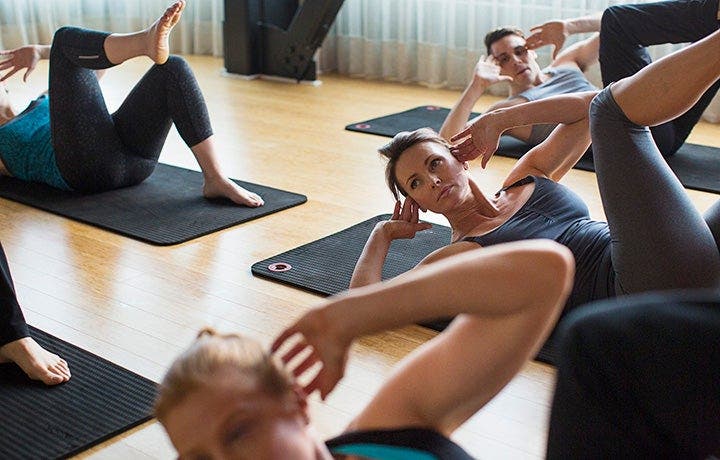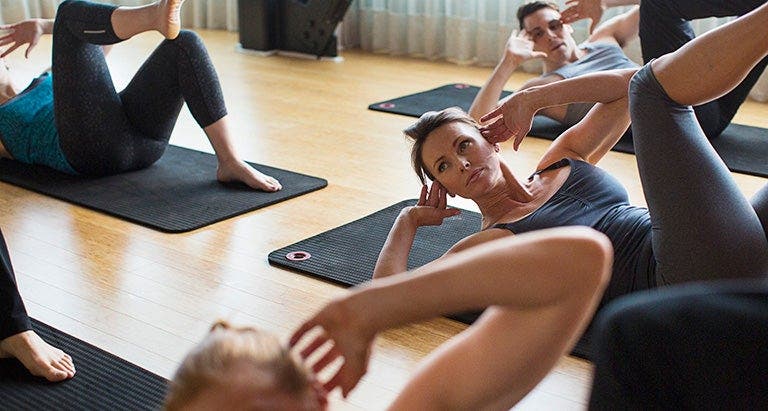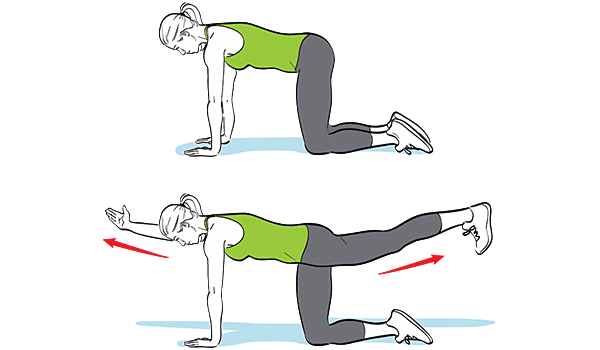The 1 Exercise that Can Help Improve 5 Super Common Health Complaints


Your core muscles—the ones in your back, abs, and hips (including your glutes and inner thighs)—play a huge role in your day-to-day life. Whether or not you realize it, everything from your evening walk around your neighborhood to how effectively you reach up to snag the last shirt off the sale shelf rely on a firm midsection.
That’s because the core stabilizes the spine, helps generate power, and fuels the body through long days. Without a strong one, you might find yourself tired and in pain, wondering what’s wrong.
Check out these top symptoms of a core in need of training—plus, tips to strengthen up ASAP.
Sign #1: Your back hurts for seemingly no reason.
If your back is killing you for no apparent reason—i.e., you didn’t pick something up wrong and tweak it—Michele Olson, PhD, an adjunct professor of sport science at Huntingdon College in Montgomery, AL, says the reason likely boils down to a weak core.
The back and abdominal muscles are both part of your core. And since these muscles are key to stabilizing and balancing your body, when they’re weak, pain can ensue—not just in your torso.
“Most individuals with knee, back, hip, and shoulder issues have weak core muscles,” she explains. “So those areas of the body end up being overexerted to compensate for the lack of stability, body balance, and control needed to move effectively and properly.”
Sign #2: You get exhausted standing in line.
Ever feel wiped after just a few minutes of waiting in the checkout line? Find yourself leaning on something to gain some energy? Stress in your hips, shoulders, neck, as well as general fatigue from standing, can all be signs of a weak core, says Olson.
“Good core strength plays a role in stabilizing your hips and lower-back muscles, which help your legs and arms generate power,” says Michael J. Ryan, PhD, an associate professor of exercise science at Fairmont State University in Fairmont, WV. If you stand for long periods of time with a weak midsection, he says, your core area will fatigue making you feel like you need a rest.
Sign #3: You have a hard time getting up.
You might not realize it but the simple act of standing up from a sitting position takes real strength. Done properly, your midsection muscles are the ones that help you rise. Have to put in more effort than you think you should (maybe you even have to lean forward and press your hands onto your thighs)? That’s a sign that because the core is weak, your body is recruiting other muscles to do the job, says Olson.
RELATED: Why You Should Work Out Your Core, Even if You Don’t Want a Six-Pack
Sign #4: Your posture stinks.
Part of your core muscles’ job is to stabilize the spine and pelvis while you stand, sit, and move—keeping your body in proper alignment throughout all times of the day, explains Ryan. Unfortunately, if they’re not strong enough to do the job, your body could compensate by slouching your shoulders or slumping, he says. This leads to strained muscles (and yep, you guessed it, back pain).
Sign #5: Your balance isn’t great.
Stand on one foot and close your eyes. Can you stay still? With the poor posture that a weak core can bring about comes a forward movement of your body weight, which throws off your balance, says Ryan. Excessively swaying your hips while walking (which, by the way, is worse in heels!), could be a sign of weak core muscles, he notes.
If you suspect your core is weak, try a bird dog:
“It focuses on lower-back strength, stabilization of the hips, and balance, but also works the shoulders and butt muscles,” says Ryan.

How to do it: Get on your hands and knees with hands below shoulders and knees below hips. Keeping stomach muscles tight by pulling the belly button toward the spine and back straight, extend the right/left arm and opposite leg until both are parallel to the ground. Resist rotating spine and hips. Hold for a second or two and then slowly return leg and arm to the ground focusing on maintaining balance. Repeat with opposite arm and leg. Start with 3 sets of 8 on each side.
